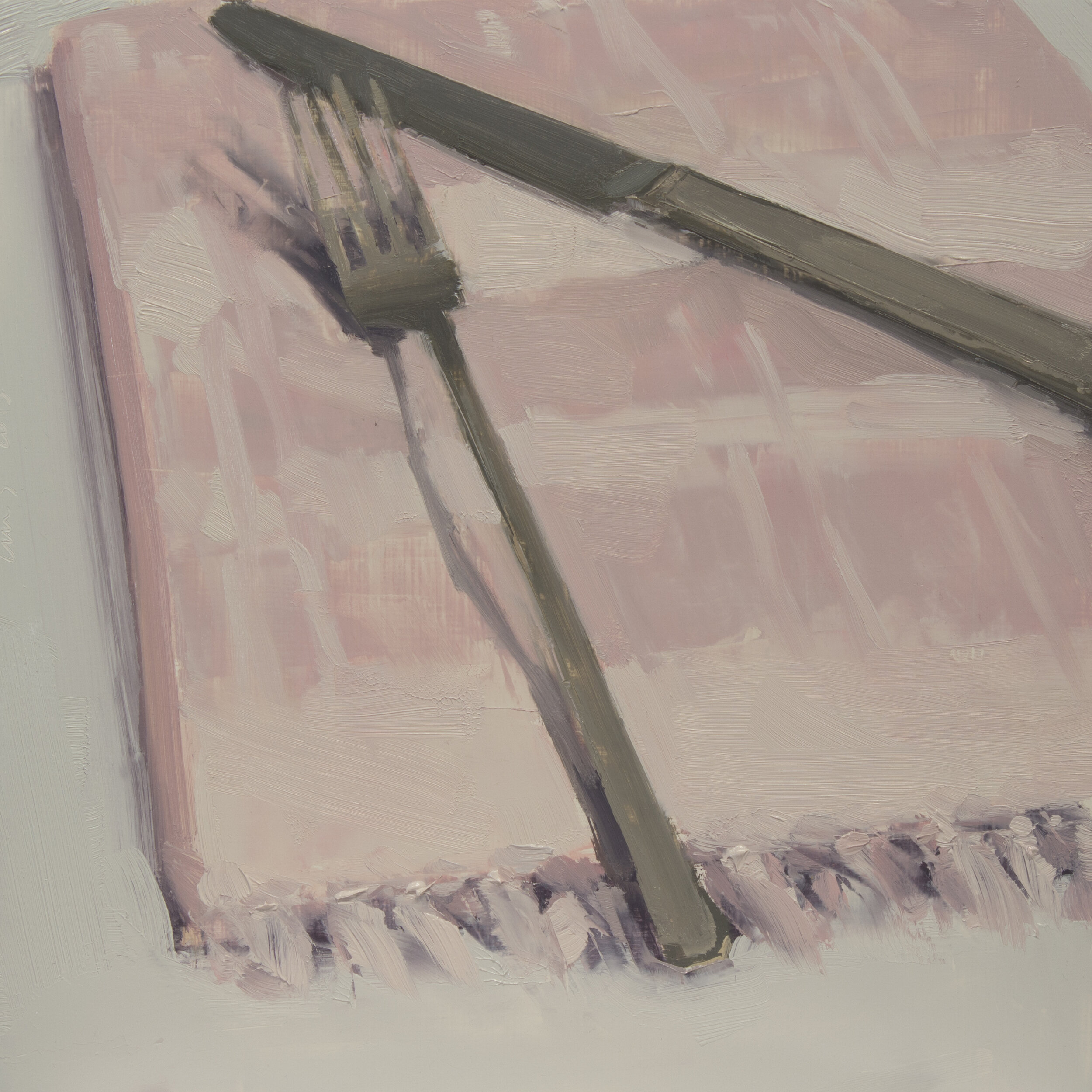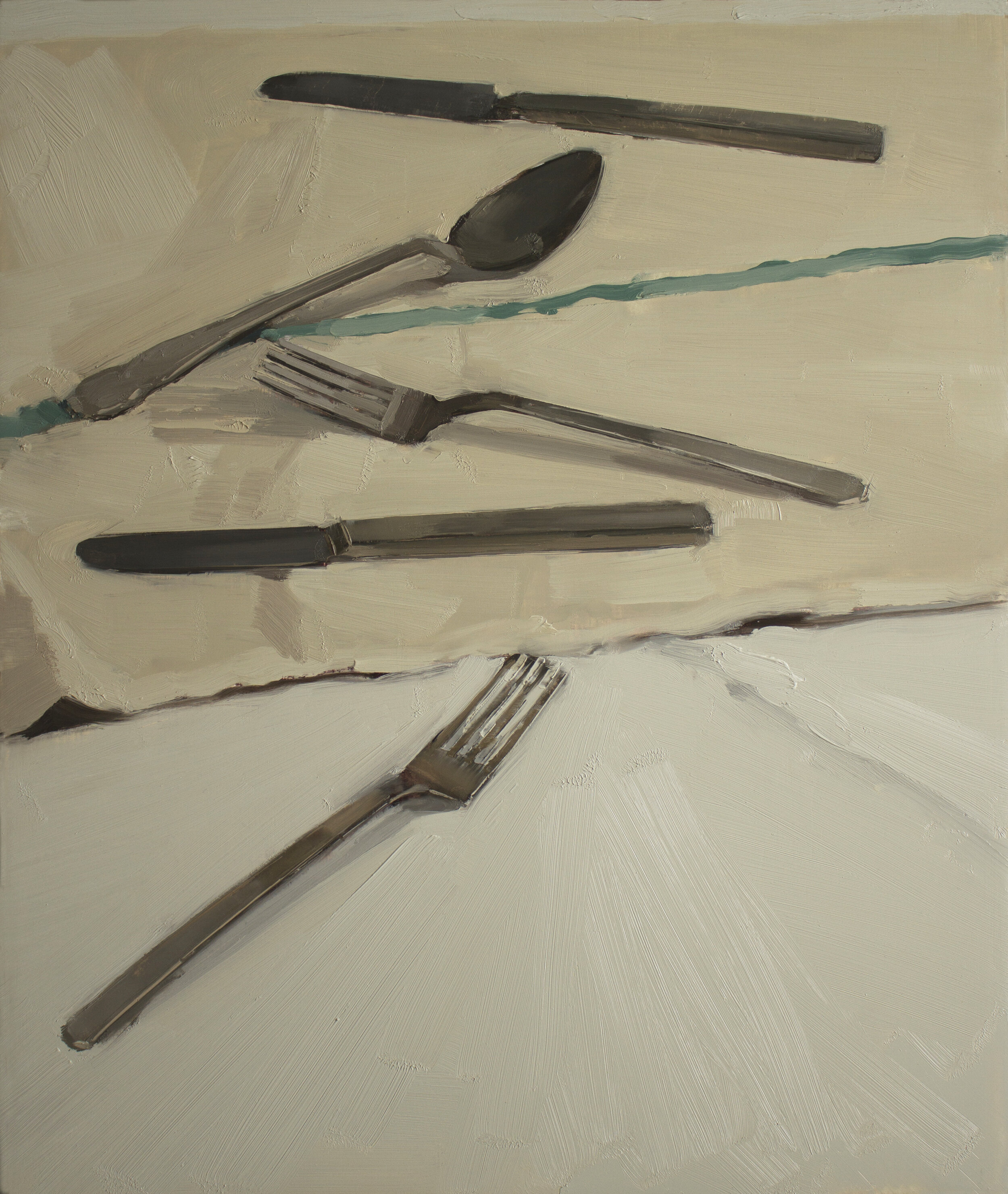“Absent yet Present: A Painterly Dialogue with the BMA's Pennsylvania German Collection”
The works in this series feature images of objects from the Pennsylvania German Collection at the The Philip and Muriel Berman Museum of Art at Ursinus College. Exhibiting paintings of the objects rather than the actual objects is like presenting a trace, or ghost of the objects; signifying a remnant of a time that is no longer accessible, no longer visible, yet in our presence.
The painting are on view at The Berman Museum of Art: January 20- May 30, 2022
For more information and inquiries please contact: info@lowellryanprojects.com

An insistent demand for a new article of food, the fruit pie, created a new utensil, the earthenware pie-dish, or “poi-schissel” whose shape is unlike any other— it is a rather flat, curved dish without any rim or base. Its unbroken curve permitted a pie baked in it to slip out easily, in its unvarying characteristic.
Fruit, never too plentiful in Europe, ripened in the hot Pennsylvania sunshine in great abundance. Peaches, a dainty grown in greenhouses in Europe, never tasted by common folk, were so plentiful in Pennsylvania that they were fed to hogs.
Although the fruit pie was invented by the English or Scotch Irish settlers, the Pennsylvania Germans, compelled by their inborn thriftiness to make use of this enormous flood of fruit, enthusiastically took over the idea from their neighbors and developed it into mass-pie production, leading to the need to develop a new style oven, and furniture, the pie-cupboard, to store the variety of pies after they had filled the air with their pleasant odors.
From Folk Art of Rural Pennsylvania by Frances Lichen
Left: Peaches, 2021, 24” X 32”, Oil on ACM
“In the collection of…”
objects from the Young Collection at Locust Grove Estate
The works in this series feature images of porcelain dinnerware pieces that are part of the collections at the Locust Grove historic estate, museum and nature preserve in Poughkeepsie, NY. Small in scale these oil paintings on Mylar mounted on panel continue my exploration of historic objects, investigating how they lose value and social status and ultimately become inert markers of cultural change.
Locust Grove was the nineteenth-century country estate of Samuel Morse, who, in addition to inventing the telegraph and Morse Code, was an artist and the founder of the National Academy of Design. In the twentieth century, the estate was sold to Poughkeepsie’s prominent Young family, noted collectors of Hudson River School paintings and the founders of the museum.
Smith explores the less visible objects in this historic house, highlighting the pieces that have been tucked away inside china cupboards and linen drawers—once used for lively dinner parties, now quietly stored away. Depicted in-situ, the objects emerge from the depths of their cupboards; lavishly painted with thin, yet opaque gestural brush strokes. Highlighted in Smith’s paintings, the deep blues and warm whites of the Canton China pieces at the Locust Grove Estate are set against enigmatic shadows. This dramatic use of light imbues the objects with enhanced importance, elevating their status and allowing for a renewed understanding of their cultural significance.
The painting are on view at Locust Grove Estate: September 27- Jan 16, 2022
For more information and inquiries please contact: info@lowellryanprojects.com
Tea Towels
Interested to connect the material culture of domesticity (“women’s work”) with the historical practice of drapery studies, I created this series of 20 Tea Towel Paintings. Revealing the beauty of the banal these paintings ask the viewer to look at everyday material culture of women through a different lens.
Culinary Paintings
On my path to becoming an artist, I worked as a private chef and caterer, combining my love of color, form and texture with taste. The many hours I spent working with food and table settings led me, quite naturally, to using it as subject matter in painting.
Tea Cups
Now more common as beautiful collectable objects, these delicate tea-cups embody rituals of friendship and gatherings. They were once cherished posessions from far-off lands.
Meat Paintings
Daughter of a butcher and former chef, I cannot help but fall in love with the beauty of raw-meat. The deep crimsons and varieties of reds and pinks keep me engaged with this uncommon subject matter.














































































































